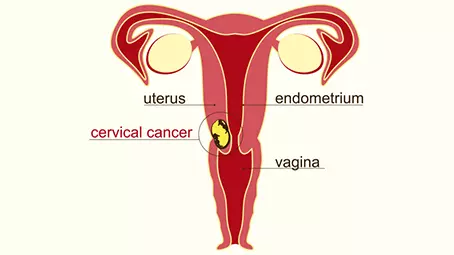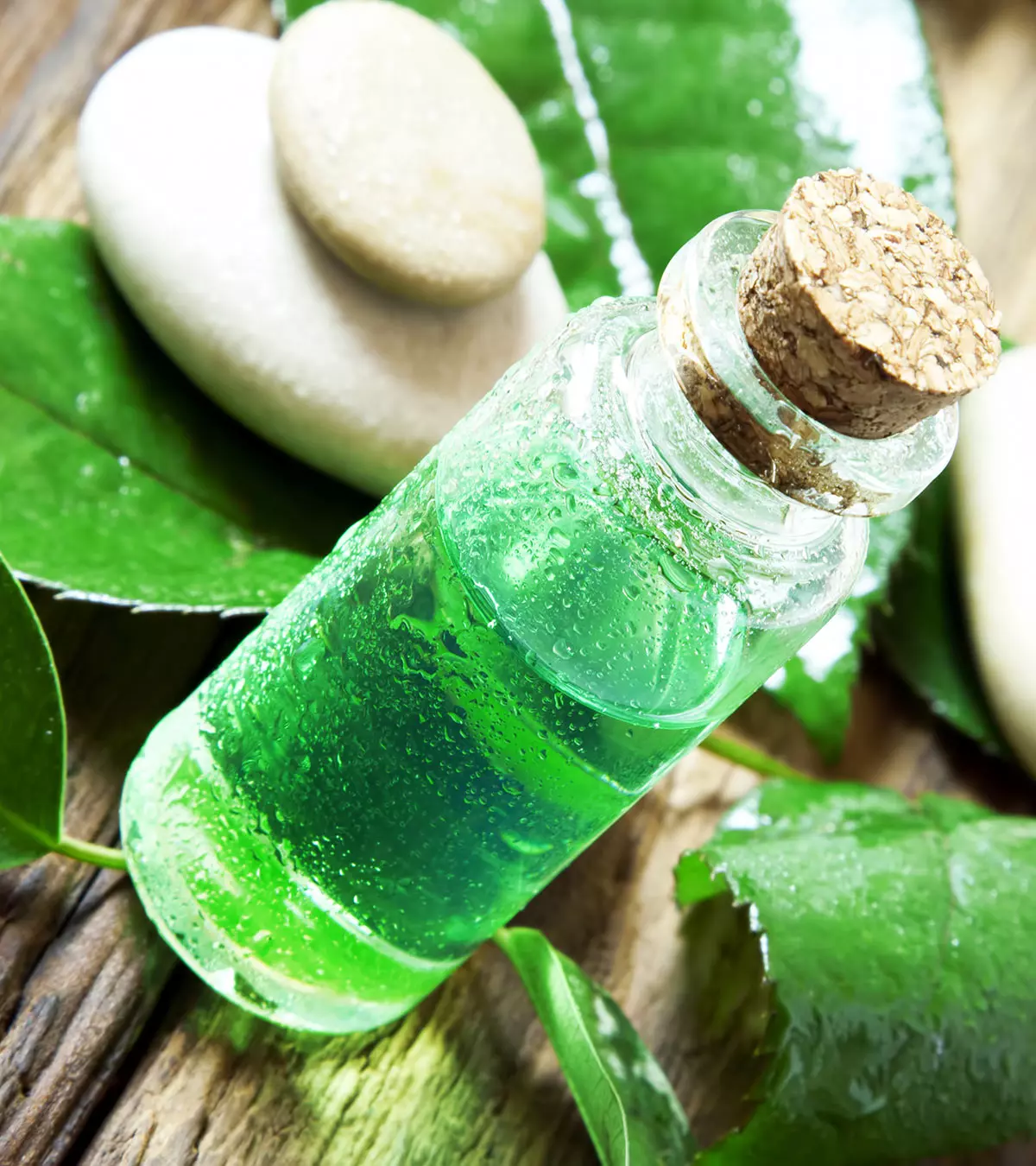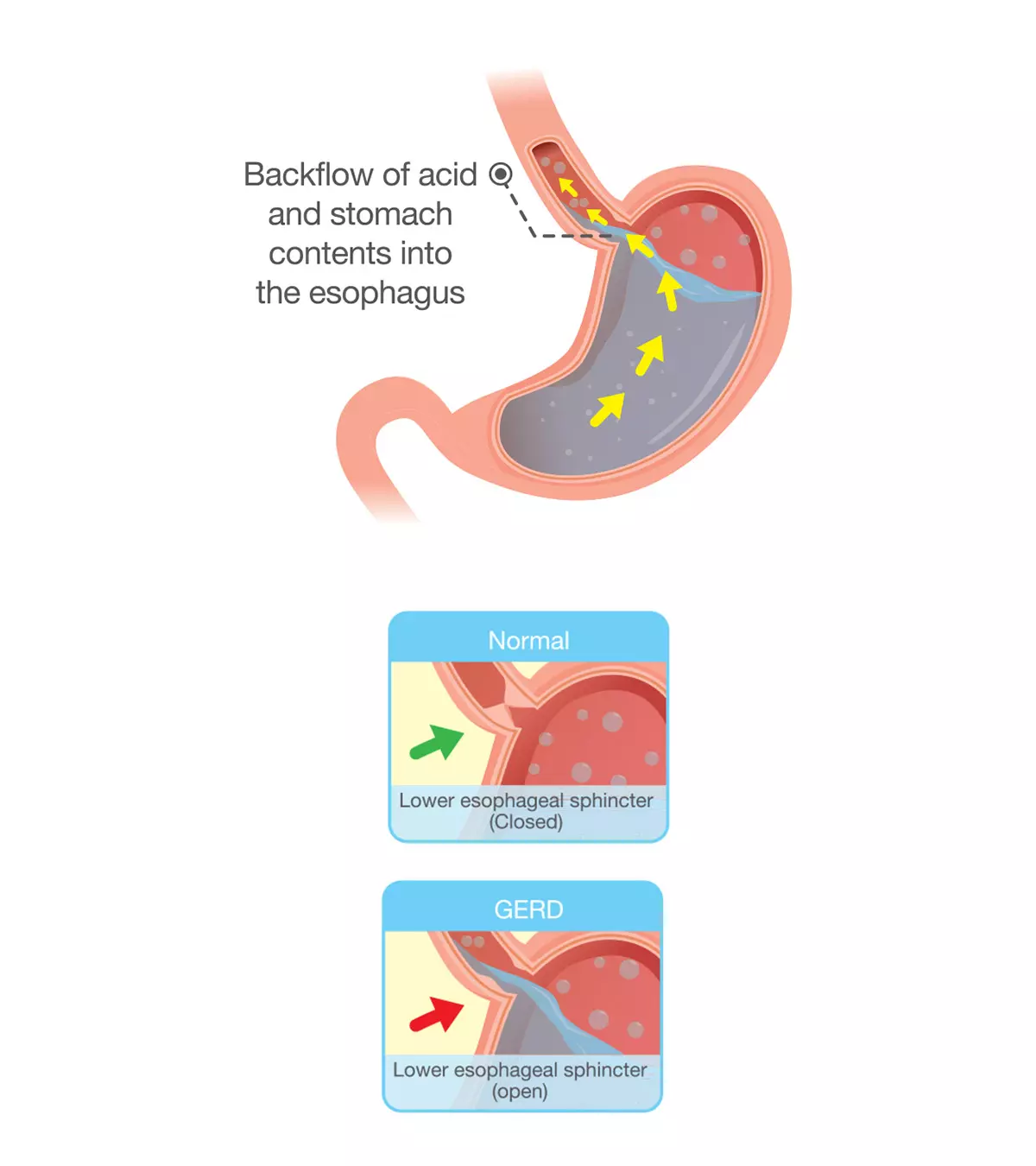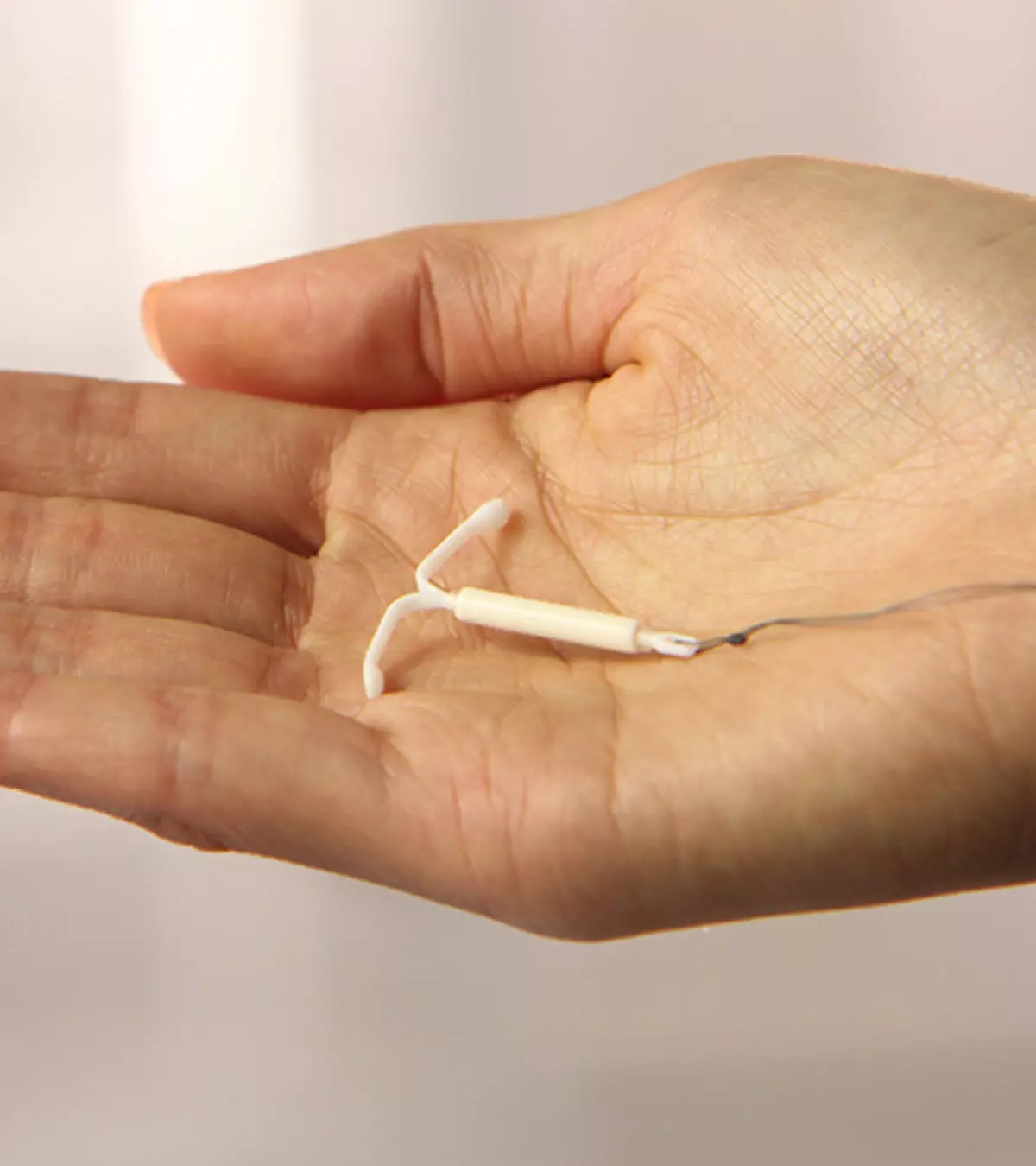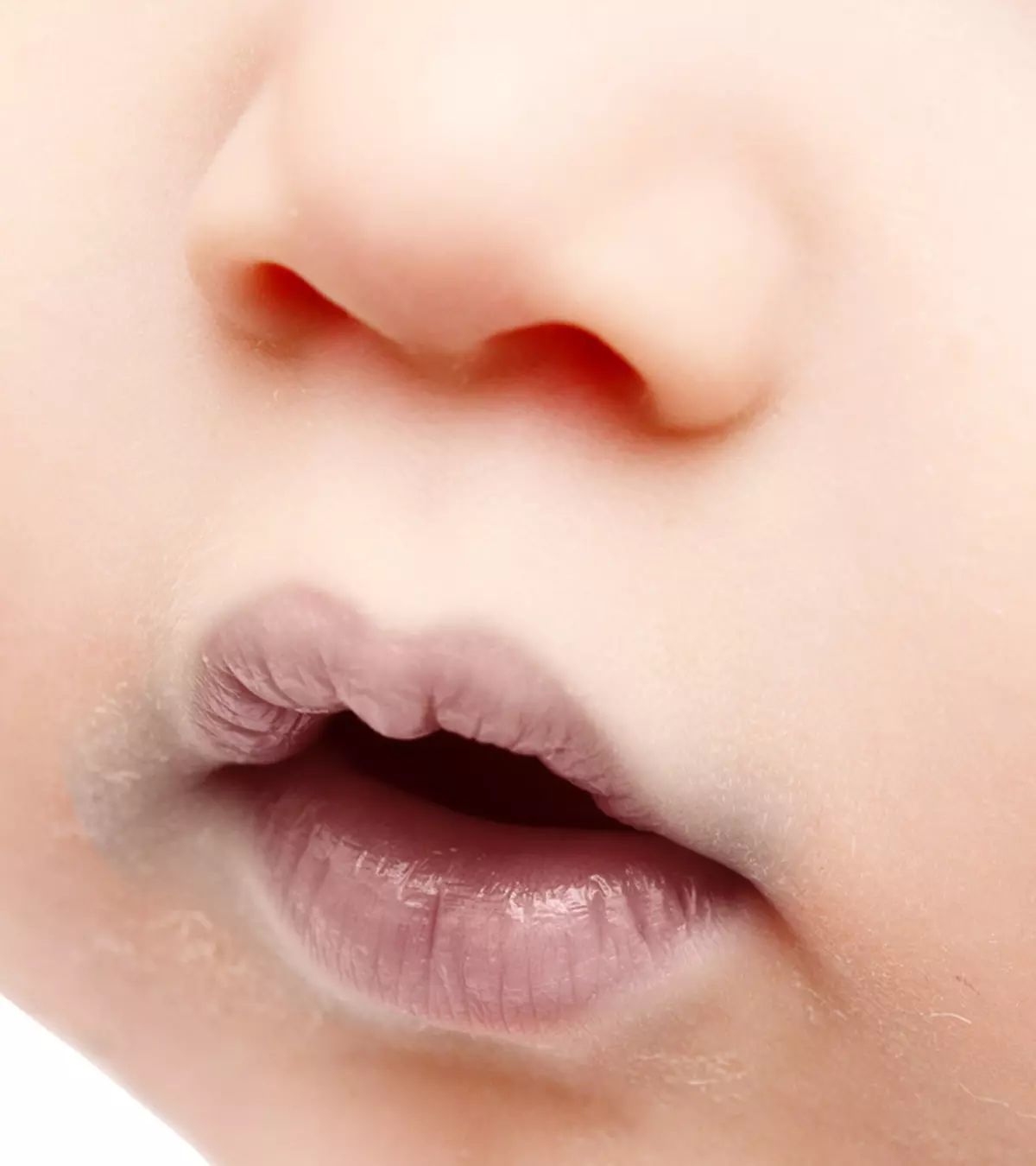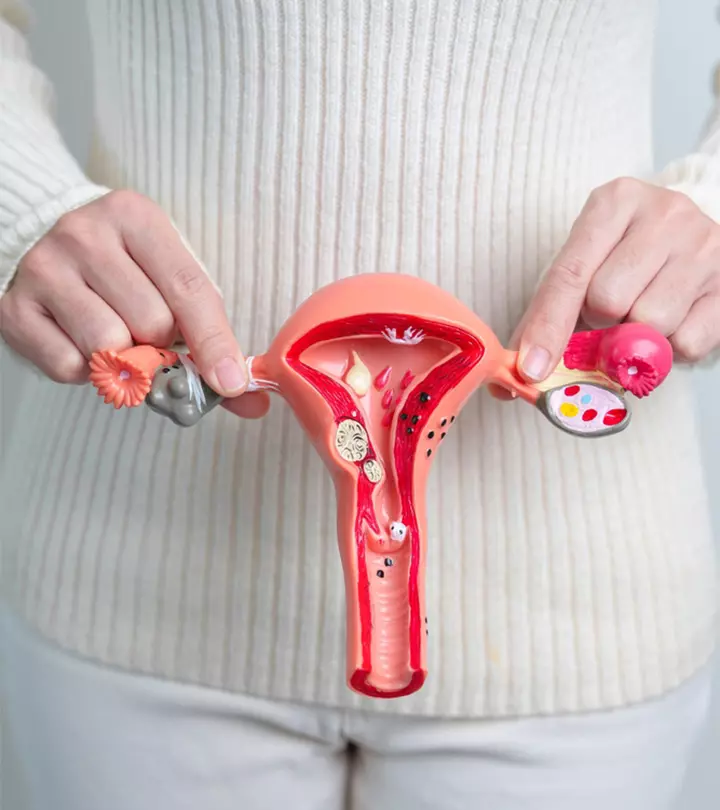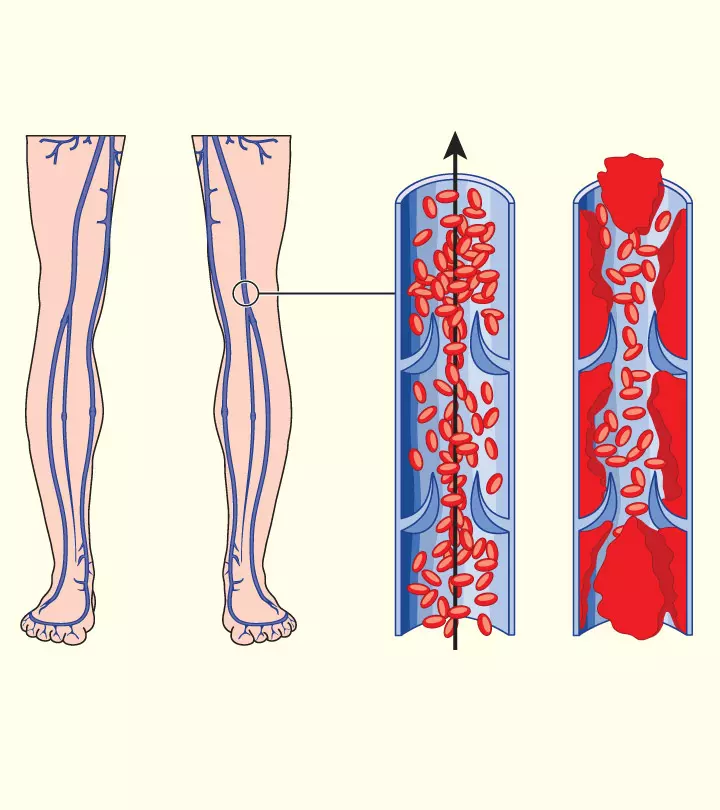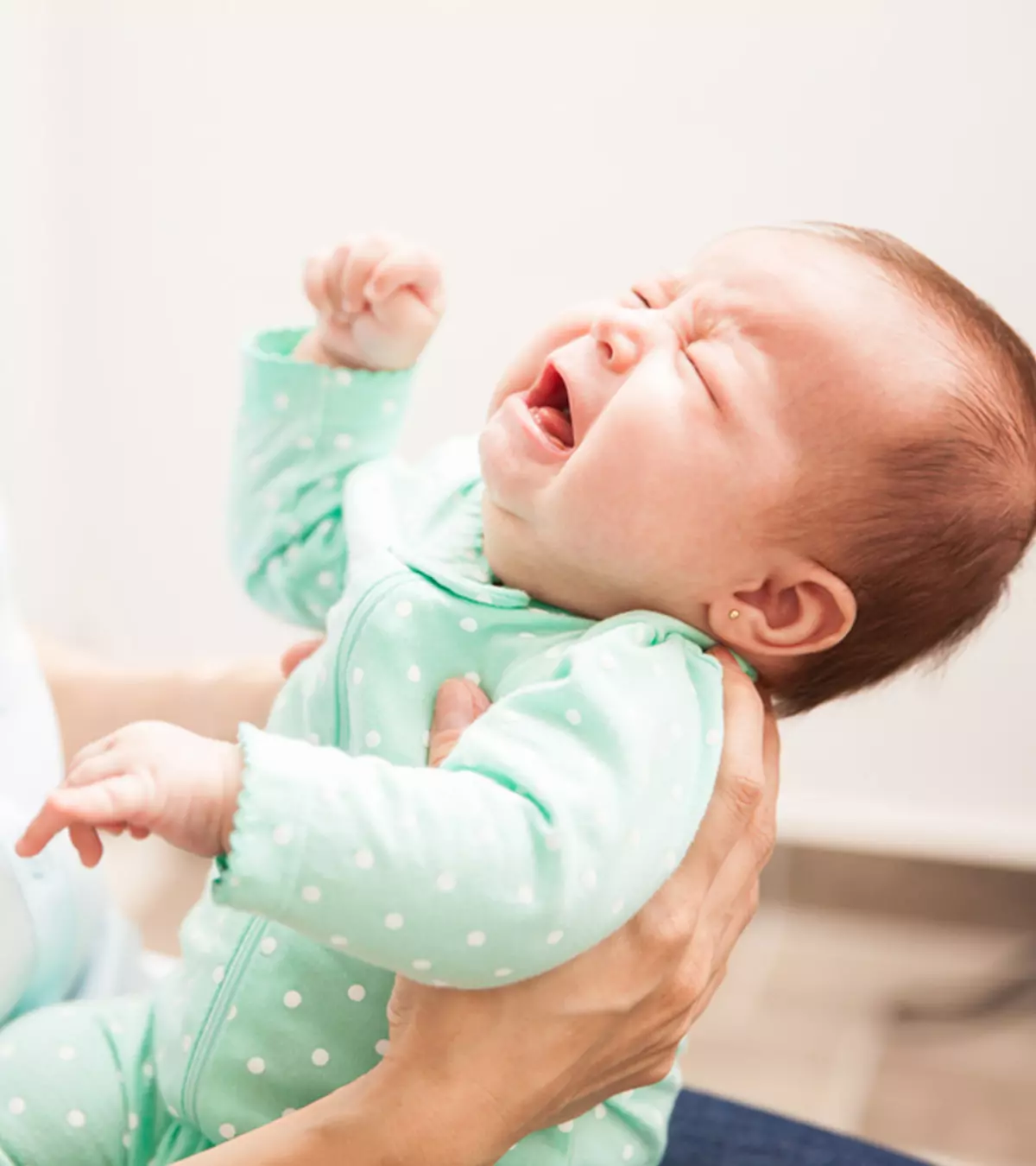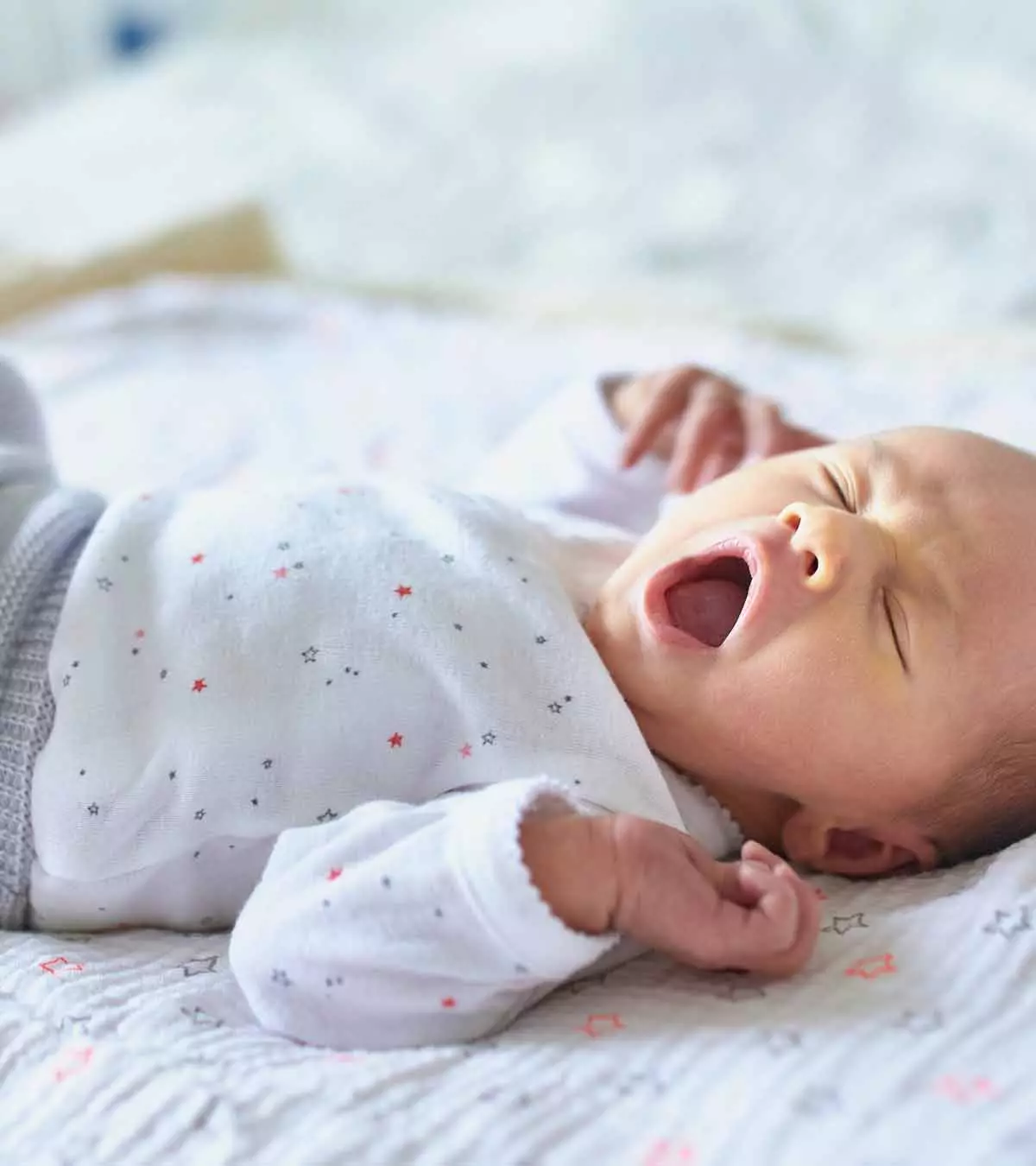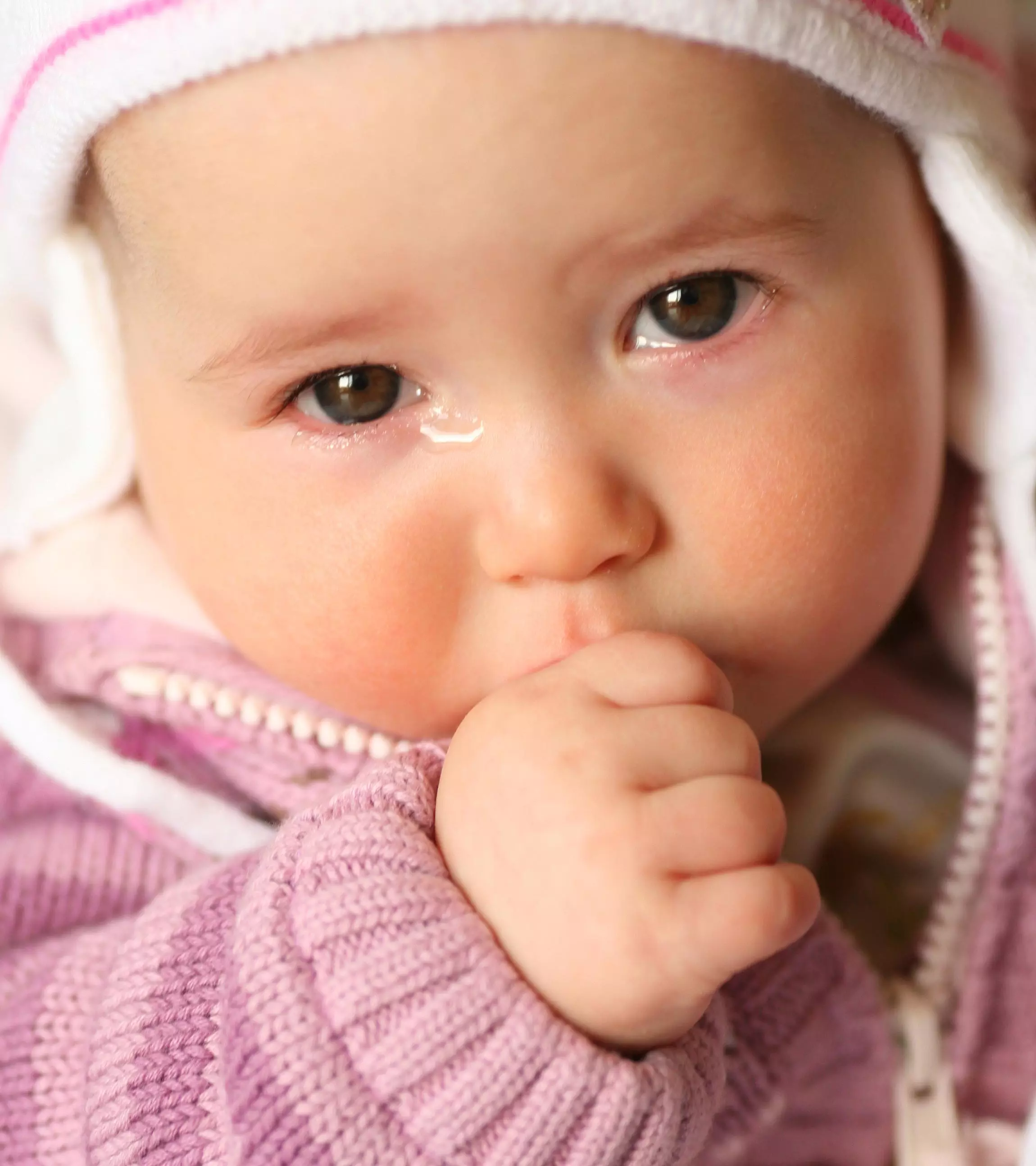
Image: ShutterStock
There could be instances when you may notice watery eyes in babies without them crying. It is usually a condition seldom to worry about since some infants could have watery eyes without crying. Several conditions and factors may lead to watery eyes in infants, and knowing the underlying causes of watery eyes is essential for parents to provide timely intervention. While most causes are harmless, caused by environmental factors, and manageable by parents, some could be due to a medical condition. Read this post as we tell you the possible reasons a baby’s eyes are watery and share some treatment options.
Key Pointers
- Watery eyes in children are usually not a cause for concern and can be managed by parents. However, underlying medical conditions could also be a cause.
- Causes of watery eyes in children include a common cold, eye infection, allergies, blocked tear ducts, nasal and upper respiratory infections, and injuries.
- It is important to consult a doctor if symptoms such as redness and inflammation of the eye tissue, pus discharge from the eye, chronic stickiness in the eye, swelling of the eyelids, swelling of the ear, nose, throat, and face, and general fussiness accompany watery eyes.
- Treatment for watery eyes in children may include antibiotic eye drops, eye drops to control the tear ducts, oral medicines for respiratory illnesses, allergy medication, and massage to ease the blocked tear duct.
- Remedies to ease a child’s discomfort include avoiding exposure to sunlight, providing adequate fluids, using a humidifier, keeping the child in a dust-free environment, and using baby-safe antiseptic wipes to wipe off the tears.
- Maintaining hygiene, looking out for blocked tear ducts, and managing allergies can help prevent watery eyes in children.
What Causes Watery Eyes In Babies?
Watery eyes (medical term: Epiphora) is due to the excess presence of tears in the eyes. The following are the main reasons why a baby could have watery eyes.
1. Common cold

Image: IStock
Babies and children have more colds per year than adults. A common cold is one of the prominent reasons for watery eyes (1). During a common cold, white blood cells fight the viral infection and produce substances that cause inflammation of the nasal mucosa.
They also dilate blood vessels in the area, resulting in nasal congestion and a runny nose. A similar process happens in the tear duct, bringing tears from the eye to the nose. This causes the duct to clog and thus build up tears in the eye.
Julia, a mom of four from Wisconsin, shares about her eight-week-old baby’s first cold symptoms. She writes, “Little redneck (her son) had his first cold this week, and it was much harder on me than him. He was all congested and had red, watery eyes. Poor baby could barely breathe through his thick boogies lodged in his nose. The doctor’s office felt confident it was just a cold since he didn’t have a fever or other symptoms, so they suggested saline drops in the nose with the booger-sucker. He HATED it, but it worked, and he’s doing much better now (i).”
2. Eye infections
One of the first signs of an infected eye is excessive tear secretion. Several eye infections can lead to watery eyes in babies, with one of the most common infections being conjunctivitisiAn infection of the conjunctiva of the eye. . Also called pink eye in babies, the infection can lead to watery eyes (2). A baby with conjunctivitis will also have other symptoms such as redness and constant eye irritation.
Another infection that can cause watery eyes in babies is a stye, which occurs due to the infection of the oil or sweat gland on the eyelid (3). A stye causes a painful red bump on the eyelids.
3. Allergies
If your baby has an allergy, then they may have watery eyes as one of the symptoms (4). Babies can be allergic to anything from pollen in the air to the fur of your family pet. Watery eyes triggered by allergies are likely to be spotted more easily due to the presence of other symptoms like skin hives on baby and swelling of the face. Some of the common allergies that could cause watery eyes in babies are conjunctivitis and hay fever. In either of the conditions, medical intervention is advised.
 Did you know?
Did you know?4. Blocked tear ducts
Tears are produced by the lacrimal gland located above the eye. Once the tears have moved through the surface of the eye, they enter two tiny holes within the inner corner of the eye. Each hole leads to a duct. The two ducts enter a larger tube, which is the tear duct, also called the nasolacrimal duct. The tear duct is thus responsible for draining excess tears from the eye into the nasal cavity (5).
A blockage in the tear duct can prevent tears from draining into the nasal cavity. Excess tears in the eye can make it watery. According to the American Academy of Ophthalmology, about 20% of newborns have blocked tear ducts at birth. But the condition resolves within the first four to six months of life (6). Researchers from the University of Utah and Lincoln Medical Center state that there is a significant rate of spontaneous resolution of congenital nasolacrimal duct obstruction, with about 70% of affected children becoming symptom-free by 3 months of age. Furthermore, over 90% of infants recover by their first birthday.
Reasons for a blocked tear duct in babies can range from eye infections, craniofacial abnormalitiesiRelated to the bones of the skull and face. , and even an injury to the face. Tear duct infection, called dacryocystitisiAn inflammation of the lacrimal sac. , is a collateral condition that can occur due to the blocked tear ducts (7). Dacryocystitis also causes watery eyes.
5. Nasal and upper respiratory infections
Watery eyes, along with a runny nose, are among the symptoms of upper respiratory infections like a common cold (8). Other infections that affect the upper respiratory system, especially the nasal cavity, may also lead to watery eyes in babies.
6. Nasal anomalies, injuries, and foreign bodies

Image: Shutterstock
Conditions like nasal polypsiAbnormal tissue growth on mucous membrane or other tissues. and tumors around the tear duct can block them, leading to watery eyes (9). Injuries to the face, especially to the bones around the eyes and nose, can damage the tissue. The eyes may become teary as a result of it. The presence of a foreign body can cause the baby’s eyes to become watery as well.
The baby’s eyes can get watery due to simple reasons such as the presence of an eyelash in the eye. So how does one know when to see a doctor for the baby’s watery eyes?
When Should You Visit A Doctor For A Baby’s Watery Eyes?
See a doctor or pediatric ophthalmologist if the following symptoms accompany a watery eye (10):
- Redness and inflammation of the eye tissue
- Drainage of pus or yellow discharge from the eye
- Eyes are chronically sticky
- Swelling of the eyelids
- Swelling of the nose, throat, or a part of the face
- Irritation and fussiness that interferes with eating and sleeping
- Associated systemic symptoms like fever, not feeding well, reduced activity
The doctor will diagnose the underlying cause through an examination of the eye and some tests if required.
Treatment For Watery Eyes In Babies

Image: IStock
The treatment depends on the cause. The following are the common medications used for treating watery eyes in babies (11):
- Antibiotic eye drops against the bacterium (bacterial infection) that has caused conjunctivitis.
- Eye drops to control tears and restrict the excess tear formation in the eyes.
- Oral medicines can be antibiotics for respiratory system infections.
- AntihistaminesiA class of drugs used to treat allergic reactions by inhibiting the effects of histamines. help control allergies by regulating the response of the immune system, thus subduing the symptoms like watery eyes.
- A massage to ease blocked tear ducts can ease out the blockage gently in the case of a congenitaliExisting right from birth. blocked tear duct. Parents are shown how to perform the massage correctly.
- Some parents opt for homeopathic treatments to address mild cases of watery eyes. However, you must consult a healthcare professional before starting such alternative remedies.
Treatment of nasal polyps and tumors may be specific to the case and can significantly vary. In the case of a viral cold, you will have to wait for the baby’s immune system to clear the pathogen on its own. The time taken for the recovery can vary as per the cause. In the meantime, you may want to do something about the condition at home. Next, we tell you about the home remedies for watery eyes in the baby.
Home Remedies For Watery Eyes In Babies

Image: Shutterstock
The eyes are delicate and should be handled with extreme care. Before you try a remedy to treat an eye-related condition such as teary eyes at home, consult the doctor for proper and safe eye care measures. (12).
Here are a few home remedies you can try to alleviate the baby’s discomfort.
- Avoid exposure to bright light or intense sunlight that may irritate the eyes.
- Provide adequate fluids to the baby when they have a cold.
- Keep the room well humidified using a humidifieriA device used to increase the moisture level in the air. . It can help lessen the irritation in the eyes.
- Keep the baby in a dust-free environment to prevent further irritation of the eyes.
- Lastly, use baby-safe, preferably antiseptic, wipes to wipe away any tears or mucus from the face. Do not use a wipe on the eyes or eyelids directly.
- Ensuring proper hygiene and monitoring signs of illness can help prevent watery eyes.
, a pediatrician from Fairview, New Jersey, explains, “The safest and most effective way to reduce watery eyes in an infant is to gently massage the tear duct two to three times a day. Wrap a warm, moist washcloth around your finger and use a gentle downward motion along the nasal bridge from the corner of the eye to massage the tear duct. This can help reduce tearing over time.
You can also minimize the risk of, and in some cases prevent, watery eyes by taking a few preventive measures.
 Be watchful
Be watchfulHow To Prevent Watery Eyes In Babies?
You can prevent watery eyes by mitigating the causes of the condition:
- Maintain proper hygiene: Keep your baby’s hands and the toys clean. Anyone with a cold or conjunctivitis should avoid coming into contact with the baby. If they have to, ensure that they wash their hands before holding the baby or the belongings. Following these eye hygiene measures can help reduce the chances of the infant catching a pathogen that could lead to conjunctivitis, cold, or any other problem that can lead to watery eyes, especially if you notice the baby rubbing eyes frequently.
- Stay alert for blocked tear ducts: Babies can be born with tear duct obstruction or blocked tear ducts. If you see your baby with watery eyes all the time for days or weeks, then it is good to get them checked for clogged tear ducts. Most cases of a blocked tear duct clear within six months (6). But if your baby stays teary-eyed beyond six months of age and for no apparent reason, then it is good to see a doctor.
- Manage allergies: If you know your baby has allergies, then avoid food and conditions that trigger the allergic reaction. You can keep the antihistamine medications, as well as the epinephrineiA neurotransmitter and a hormone, also known as adrenaline, produced by adrenal glands. shot, handy.
Keeping your baby safe from injuries is also a way to avoid watery eyes.
Frequently Asked Questions
1. Does ear infection cause watery eyes in babies?
Yes, your baby may experience teary or watery eyes as a sign of an upper respiratory infection causing a middle ear infection (13).
2. Does breast milk help with eye infections?
Yes, several studies have shown that breast milk can be used as an eye drop in babies as a home remedy to treat various eye conditions, including dry eye, conjunctivitis, and eye discharge (14) (15) (16).
3. Can a baby’s watery eyes affect their vision?
Usually, a baby’s watery eyes are not harmful to their vision. However, some infections that cause watery eyes may affect vision negatively. Consult your baby’s doctor if watery eyes persist.
4. Can a baby’s watery eyes indicate a food allergy?
Yes, itchy, red, watery eyes may indicate food allergy in babies. It may be accompanied by other symptoms such as sneezing, a runny or blocked nose, wheezing or coughing, an itchy skin rash, and worsening of asthma or eczema symptoms (18).
5. Can fungal infections cause watery eyes in babies?
Yes, fungal eye infections may cause watery eyes along with other symptoms such as eye pain, redness, sensitivity to light, and eye discharge (19).
Watery eyes in babies is a common condition that generally does not indicate any serious problem. Babies may have watery eyes due to cold and cough, allergies, blocked tear ducts, etc. Although these problems may cause discomfort, they resolve on their own. However, if you notice eye inflammation, swollen baby eyes, swelling of the eyelids, and pus drainage, contact your doctor since these symptoms may indicate underlying problems. Watery eyes can be treated by a doctor who specializes in ophthalmology using antibiotic eye drops and antihistamines or by massaging blocked tear ducts. At home, you may give your baby adequate fluids to recover from colds, avoid bright lights, and use a humidifier to reduce the discomfort.
Infographic: Symptoms Of Watery Eyes With Other Problems
The symptoms accompanying watery eyes in babies may indicate an underlying issue, or it may be just a foreign particle irritating your infant’s eye. Carefully observe the cues of your baby and make a note of the symptoms and their duration. Read the infographic below to learn what other symptoms may accompany watery eyes and how to interpret them. Illustration: Momjunction Design Team
Babies can experience a lot before needing treatment for watery eyes. This video is a perfect guide to learn what to look out for. Get help for your little one to alleviate the problem.
Personal Experience: Source
MomJunction articles include first-hand experiences to provide you with better insights through real-life narratives. Here are the sources of personal accounts referenced in this article.
i. Eight weeks;https://julia-transition.blogspot.com/2010/04/eight-weeks.html
References
1. Common cold; Johns Hopkins Medicine
2. Symptoms of Pink Eye; Centers for Disease Control and Prevention
3. Sties; Healthy Children; American Academy of Pediatrics
4. Allergies; Healthy Children; American Academy of Pediatrics
5. Blocked Tear Ducts; C.S. Mott Children’s Hospital
6. What Is a Blocked Tear Duct?; American Academy of
7.OphthalmologyRoger S. et al.; Dacryocystitis; National Center for Biotechnology Information (2019)
8. Rhinovirus (Common Cold); State of Hawaii, Department of Health;State of Hawaii, Department of Health
9. Nasal Polyps; Cedars Sinai
10. Could Your Watery Eyes Be a Sign of a Blocked Tear Duct?; Massachusetts Eye And Ear
11. Watery Eyes: Care and Treatment; Cleveland Clinic
12. Home Remedies For Watery Eyes; Health Research Funding
13. Swimmer’s ear vs ear infection: Four ways to spot the difference; Allina Health
14. Karolina Karcz et al.; Non-Nutritional Use of Human Milk Part 1: A Survey of the Use of Breast Milk as a Therapy for Mucosal Infections of Various Types in Poland; NCBI
15. Tetsu Sugimura et al.; Efficacy and safety of breast milk eye drops in infants with eye discharge; NCBI
16. Justin T L Baynham et al.; Antibacterial effect of human milk for common causes of paediatric conjunctivitis; BMJ
17. Four eye health warnings in new born babies; Look After Your Eyes
18. Food allergies in babies and young children; NHS
19. Fungal Eye Infections Basics; Centers for Disease Control and Prevention
Community Experiences
Join the conversation and become a part of our nurturing community! Share your stories, experiences, and insights to connect with fellow parents.
Read full bio of Dr. Shashidhar A
- Dr. Leah Alexander is a board-certified pediatrician who provides medical care in an outpatient setting in Fair Lawn, New Jersey. She has also been working as a pediatrician with Medical Doctors Associates at Pediatricare Associates, New Jersey, since 2005. Dr. Alexander holds a bachelor's degree in Health Science from Kalamazoo College and a Doctor of Medicine degree from Michigan State University.
 Dr. Leah Alexander is a board-certified pediatrician who provides medical care in an outpatient setting in Fair Lawn, New Jersey. She has also been working as a pediatrician with Medical Doctors Associates at Pediatricare Associates, New Jersey, since 2005. Dr. Alexander holds a bachelor's degree in Health Science from Kalamazoo College and a Doctor of Medicine degree from Michigan State University.
Dr. Leah Alexander is a board-certified pediatrician who provides medical care in an outpatient setting in Fair Lawn, New Jersey. She has also been working as a pediatrician with Medical Doctors Associates at Pediatricare Associates, New Jersey, since 2005. Dr. Alexander holds a bachelor's degree in Health Science from Kalamazoo College and a Doctor of Medicine degree from Michigan State University.
Read full bio of Rohit Garoo
Read full bio of Dr. Ritika Shah
Read full bio of Shinta Liz Sunny









